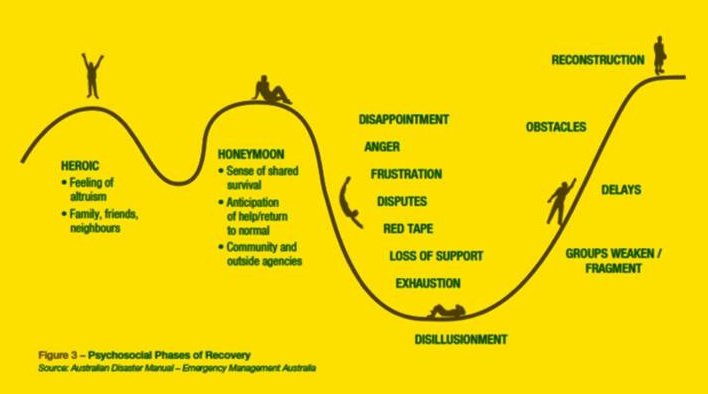All Right? has received a Lotteries Grant to support people in Kaikōura recover and adapt from the earthquakes and other stressors.
Over the next 12 months All Right? will work alongside the local community on a range initiatives designed to make people more aware of their wellbeing and ways to improve it. To help us out we've appointed Kaikōura local Rachel Vaughan to the All Right? team.
Kaikōura has been through a lot - not only the shaking but also the isolation caused by damage to rail and road, and the impact of the quakes on whenua (land) and moana (sea).
While nobody can control the environment or how long it’s going to take to get back to ‘normal’, it is possible to do the things that help us look after ourselves. All Right? is encouraging people in Kaikōura to think about the types of things they like doing to look after themselves, and finding ways to do these things more often.
Remember it is all right to reach out for extra support. You are not alone and help is available. Just call 0800 777 846.
Find out more about All Right? in Kaikōura

The impact of disasters on mental health
Natural disasters like the Kaikōura earthquakes have a major impact on people's mental health. In fact, international literature suggests that psychosocial recovery after a disaster can take up to ten years.
A key reason for this is that there's often a double blow – the shock and effects of the disaster itself, and then secondary, recovery-related issues such as dealing with broken homes, insurance claims, poor roading and the loss of community facilities.
These secondary issues – sometimes called 'manmade stressors' – can be worse than the disaster itself, particularly if the recovery is long, as they erode wellbeing over time.

This graph shows the phases of psychosocial recovery that are commonly accepted around the world. Of course, the impact of a disaster will vary from person to person. People will progress through the phases at different rates and the phases may even overlap each other.
The Heroic Phase
This is the first phase following any disaster – it's a time when adrenalin is running high and there's a massive focus on saving each other and property. There's a lot of activity in this period.
The Honeymoon Phase
This can extend from one week to several months after the disaster. It's a time when hope and optimism are at the forefront. There's a feeling that help will continue to be available and that things will return to normal soon. Typically there is a lot of help and emotional support available at this time and people feel very proud of surviving the event.
The Disillusionment Phase
This is the phase where reality sets in. People start to realise how long recovery is going to take and the red tape involved. The length and severity of this phase will depend on the extent of loss and the resources available but it can last several years.
Several things can happen during this phase:
- People can feel overwhelmed.
- There is unrelenting stress and fatigue.
- Anger increases along with depression, isolation and loneliness.
- There's frustration, grief, hostility and exhaustion.
- Financial pressures and relationship issues can emerge.
Reconstruction Phase
Good news! This phase sees people gradually returning to their regular routines and life 'as normal'.
All Right? works with communities to identify and understand their situation and stressors, and empower them with strategies to get through the tough times and come our stronger and better equipped to manage their wellbeing.